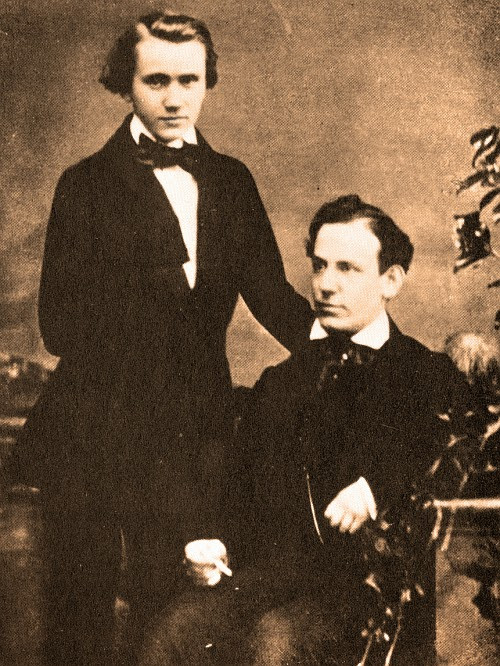Johannes Brahms’ Hungarian Dances are celebrated worldwide, and among them, Hungarian Dance No. 5 stands out as a true gem. This vibrant piece, part of a set of 21 dances, is deeply inspired by the rich tapestry of Hungarian folk music. This genre itself is a fascinating blend of musical traditions from Hungarians and minority cultures across regions like Poland, Czech Republic, Slovakia, Slovenia, Moravia, and Croatia. Originally composed for piano, Hungarian Dance No. 5 and the entire set have been masterfully arranged for full orchestra, amplifying their captivating energy. You’ve likely heard its infectious melody before, and for good reason.
Hungarian Dance No. 5 performed by Hungarian Symphony Orchestra Budapest
[Insert Video Here – if embedding is possible, otherwise just leave the text reference]
A Continental Sensation Rooted in Folk Inspiration

It’s not just Brahms who found inspiration in the sounds of Hungary. The 19th century witnessed a surge of interest in Hungarian musical idioms, largely ignited by Franz Liszt’s 19 Hungarian Rhapsodies. Brahms’ own contribution to this captivating musical landscape was fueled by a couple of key trends. Firstly, piano duets, or four-hand pieces, were immensely popular, offering a dynamic spectacle as two players’ hands danced across the keyboard. Secondly, there was a growing demand in European taverns for music that echoed the vibrant cultures of newly immigrated minority groups, and Hungarian-inspired sounds perfectly fit this bill.
The Serendipitous Spark: Friendship with Reményi

The true catalyst for Brahms’ Hungarian Dances, including the iconic Hungarian Dance Number 5, was an encounter years prior with Hungarian violinist Ede Reményi. Interestingly, Reményi shared a teacher with Joseph Joachim, for whom Brahms later composed his Double Concerto for Violin and Cello, highlighting a tightly knit musical circle. A few years after witnessing Reményi’s passionate performances, a young, 20-year-old Brahms became Reményi’s piano accompanist. This role immersed Brahms in tours and, more importantly, in Reményi’s native Hungarian musical heritage firsthand.
This authentic immersion in Hungarian folk melodies provided Brahms with the bedrock for his compositions in this style. When he began composing his Hungarian Dances, including Hungarian Dance No. 5, only Nos. 11, 14, and 16 are considered entirely original Brahms creations. Yet, the entire set remains amongst his most beloved and frequently performed pieces. In Hungarian Dance Number 5 and the broader collection, Brahms masterfully captured the buoyant and exhilarating spirit of the csárdás and verbunkos, traditional Hungarian folk dances. These dances are characterized by dramatic shifts in tempo, lively rhythms, and virtuosic, swirling melodic passages that are instantly engaging.
The term csárdás is actually an umbrella term encompassing various Hungarian folk dances found across different ethnic regions, each possessing subtle regional nuances in name, structure, and performance. Both men and women participate in csárdás dances, with women traditionally wearing wide skirts that create a striking flared shape as they twirl, a visual element that mirrors the music’s dynamism (as seen at 3:18 in the provided video).
The verbunkos, the older of the two dance forms, traces its origins back to 18th-century Hungarian military traditions. The term “verbunk” derives from the German word “werben,” meaning “to recruit.” To attract young men to enlist, military units would organize grand festivities filled with food, drink, and, crucially, dancing. Officers, led by their sergeant, would showcase a powerful display of stomping, high kicks, spur-clicks, and heel slaps (catch this energetic display at 1:22 in the video). Prospective recruits would gather, drawn in by the spectacle, and as the verbunkos reached a fever pitch of energy, they were often pulled into the dance, effectively enlisting with a handshake amid the excitement.

Almost 150 years later, the infectious energy of Brahms’ music, particularly Hungarian Dance No. 5, remains as vibrant as it was in its initial performances in European taverns and grand salons. Encoded within its black and white notation is a tribute to Hungary’s diverse history and people, stirring and thrilling listeners with its spirited, swinging melodies. Just be mindful whose hand you shake – you might just find yourself swept into the dance!
Explore Some Memorable Hungarian Dances featuring Charlie Chaplin, Looney Tunes, and a humorous scene with Frenchmen.
Hungarian Dances Nos. 5 and 6 were recently featured on BRAHMS FEST at the Lesher Center for the Arts in Walnut Creek.


